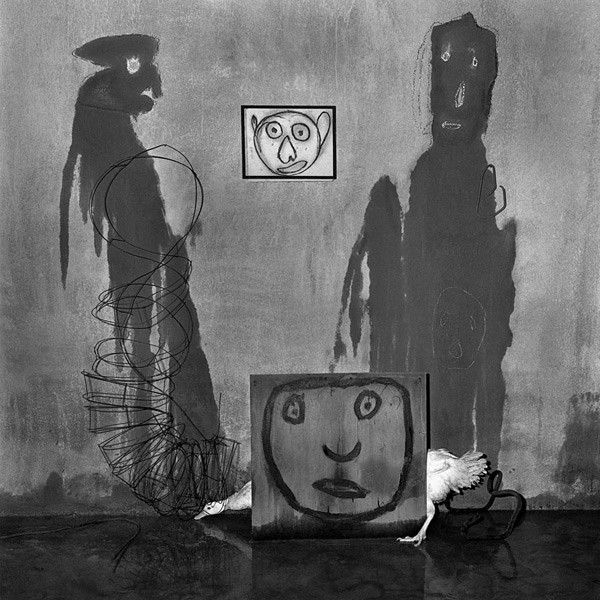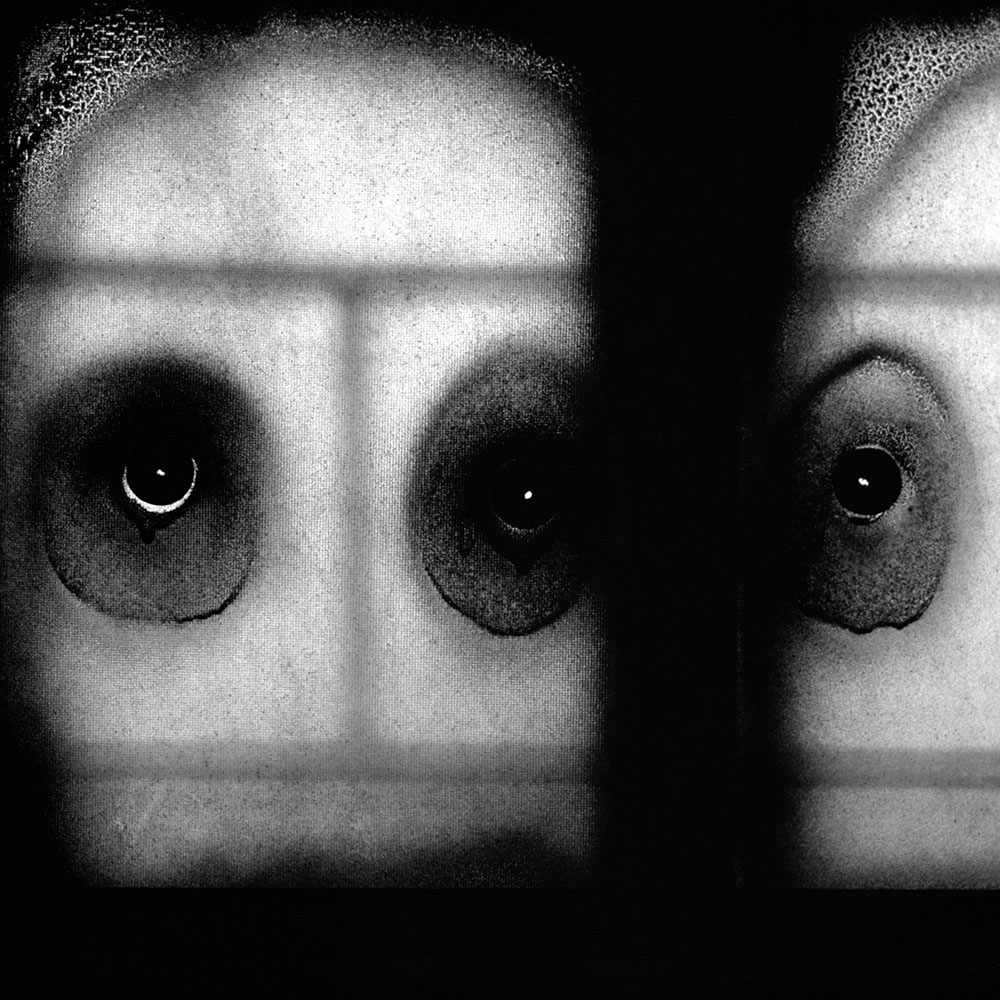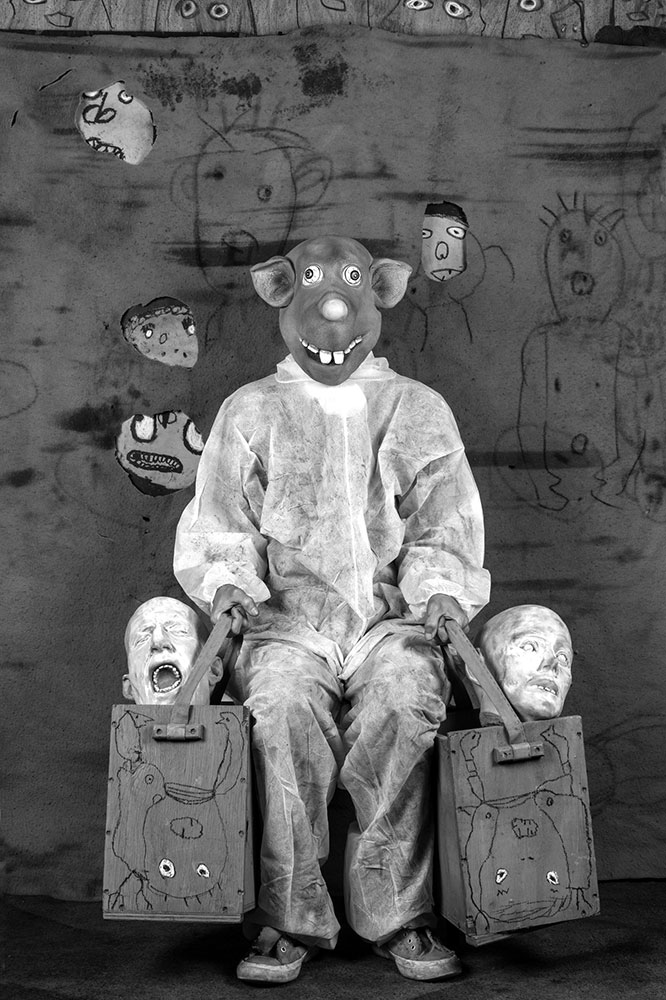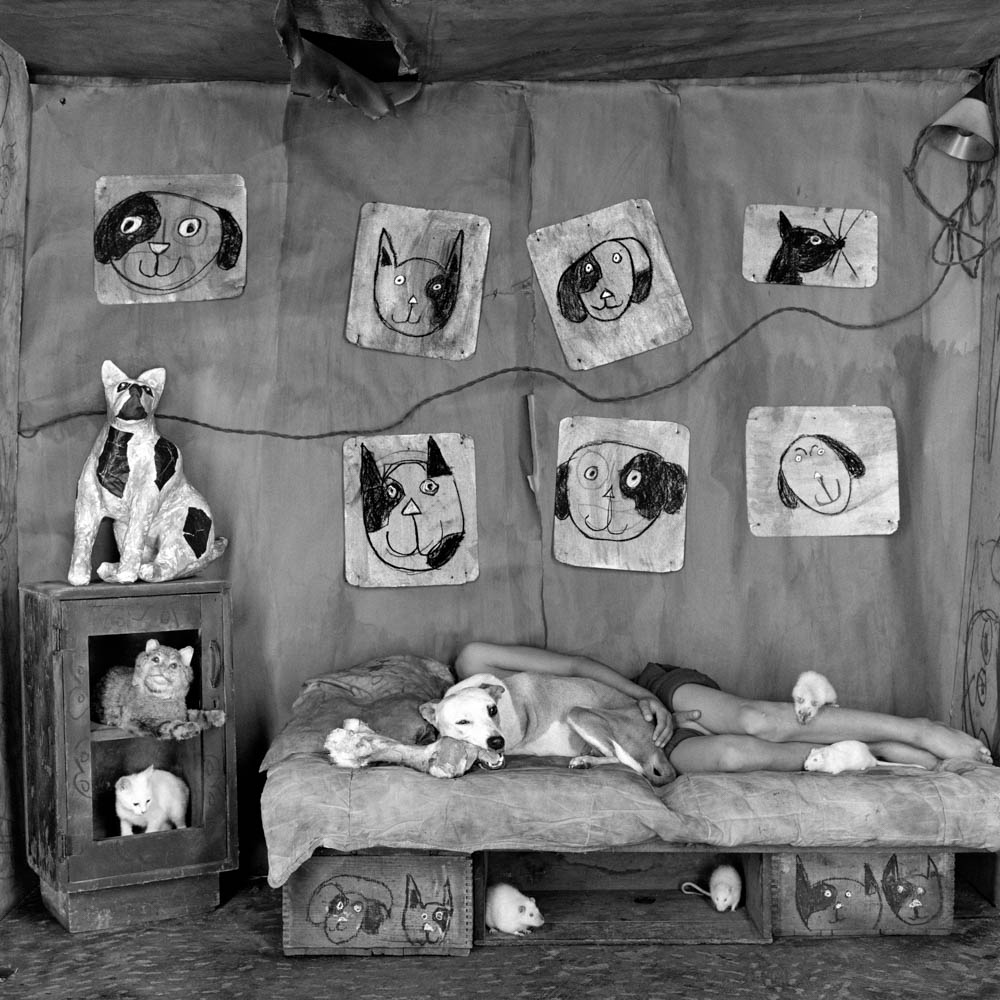The theatre of apparitions
A journey into the mind with Roger Ballen, through photography, poetry, books, films, fairy tales, archetypes and the uniqueness certified by NFT, on show in Italy at Senigallia City of Photography 2022 and at the 59th Venice Art Biennale.
By Simona Marani
Playing in the dark regions of the mind with Roger Ballen, one can have surprising encounters, with the unconscious, the uncanny, with the frighteningly seductive essence of the human condition that makes one tremble, vibrate, rise from what dwells deep within. Continuing to inhabit the margins, challenge the limits of photography, and explore the archetype of the human mind, the singular visual artist has distinguished himself as one of the most original image-makers of the 21st century, defining his artistic universe: Ballenesque. The synthesis of Ballen’s personal and unmistakable style has made him an ever-changing form of expression, one of the most influential in contemporary photography. The courageous journey to discover the enigmas of the mind, populated by mythological creatures, the truth of fetishes, and the tricks played by the images of the collective unconscious. Perfect for a look at the other side of the conscious universe, for a leap into its reverse.
The protagonist of the updated pages of his monograph and a double Italian exhibition in Senigallia City of Photography 2022, while sabotaging conventions and beliefs, with the infinite possibilities of transformation and coexistence of his work and illuminating the South African pavilion and The Milk of Dreams at the 59th International Art Exhibition in Venice. The double exhibition curated by Massimo Minini at the two venues of Palazzo del Duca and Palazzetto Baviera of Senigallia Città della Fotografia 2022, ventures into the darkest and brightest corners of The Place of the upside down. The title echoes the image chosen for the cover of the monographic volume of Ballenesque Roger Ballen A Retrospective, published by Thames and Hudson in 2017. A chronological journey through Ballen’s entire oeuvre, in bookshops since last February, with a new color edition, enriched with texts that reread now-iconic images and introduce new ones, along with new projects. Almost at the same time, Roger Ballen represented South Africa, long chosen as the realm and home of his ever-evolving universe, at the Venice Art Biennale, curated by Cecilia Alemani, inspired by Leonora Carrington’s ‘Milk of Dreams’.
“John has two ears that look like wings. They are so big that one day they take flight and fly off, leaving the poor man without a head. Senor Moustache has two faces, a daughter who eats spiders and an upside-down wife … ‘little George’ grows a house instead of a head, but he was happy to play with his house.”
 Transformation, 2004
Transformation, 2004
What changes and never changes in Ballenesque’s constantly metamorphosing universe?
As time progresses the Ballenesque aesthetic more frequently incorporates other media such as drawing, film, and installations. If possible, I try to make installations sourced in the place that I am exhibiting. Currently, I am working on a feature film about my life in photography.
A completely new chapter of the monograph and the exhibition at Palazzetto Baviera are dedicated to color. Five decades of black and white, how have they approached this new phase of technical, aesthetic, and poetic experimentation?
Beginning in 2016, after Leica provided me with a digital camera to produce a film about the Ballenesque I started to exclusively take photographs in Color. To be honest, I never expected that I would ever involve myself in this media, but I was utterly surprised how well the initial photographs I took turned out. It is always important to feel inspired and challenged by one’s artistic activities. My color images have expanded my vision and I have continued to build on this work.
The creatures that animate Leonora Carrington’s fantastic texts and illustrations, drawn on walls and in a notebook, seem to have much in common with the infinite possibilities of transformation and coexistence in your work. How does the otherworldly dimension of The Theatre of Apparitions reveal the metaphorical relationship between light and darkness conceptualized by the South African pavilion with Into the Light?
It has always been my opinion that in order to experience the so-called light, one must come to terms with the hidden side of the mind or the shadow side as Jung referred to. The images from the Theatre of Apparitions are a combination of our inner and outer worlds, a place of the archetypal mind. This place, and the images that arise out of it, are old. In a kind of amniotic darkness of the womb, the depictions recreate the perceptual realm of a fragmented world of part-objects, fears of annihilation, and chaotic perceptions merging reality and fantasy, self and other. They are flickering archetypes from the collective unconscious of humankind itself. In these silhouettes, there are evocations of the weathered rock of caves, depicting a life long gone in our Palaeolithic prehistory. Some of the recurring relationships in the book – those of human and canine, bird and beast – invoke familiar primordial bonds. They, and others, are a kind of mythological ‘memory fossil’, and they call on ancient shamanistic visions, sacred symbols inherited and embedded through the process of our own evolution. The images in this project are likely to be embedded in the subconscious mind. They are all, in one way or another, pictographs made into photographs – brought out from the unbearable, the unacceptable, even the unthinkable. At times, they may escape and visit us as the vestiges of introspection. We may ignore them, watch with intrigue, or dispel them as nightmares entering as a curse from afar or signs of psychosis. But the apparitions are answers to a calling of absence, a comforting gift from deep within ourselves or from a more spiritual realm somewhere else. They are a kind of hallucination making up for that which is lost; a contact with that which one desires but does not have in physical form. The visions presented are glimpses of parts otherwise invisible to the eye, the stuff of dreams made perceptible through the power of the photographic lens. Embodied as living artworks, they are reminiscent of cave paintings, and, like the unconscious itself.
 Stare, 2008
Stare, 2008
Roger the Rat marks a new expressive revolution, with the images collected in the book (Hatje Cantz Verlag, 2020), and the accompanying photographic animations, ready to whip up even the covid virus, in advance of the video. Just launched with the chance to win a rare limited edition NFT collection. Who is Roger the rat and how can you meet him?
“I cannot remember when I put this rat mask on for the first time. Maybe I was born with it. I am not sure what is underneath. I never take it off: I sleep with it, bathe with it. I have heard people call me a rat and others a human with a mask. I am unsure whether I am a rat or human. Perhaps my mother was a rat and my father a human. I think I am a bit of each.” – Roger the Rat I will be launching the Roger the Rat film on YouTube and Vimeo shortly. Meanwhile you can view clips from the film on my Instagram account or on Open Sea where one can view various images and videos that are available as NFTs.
 Bagged, 2017
Bagged, 2017
How does your relationship with the animal instinct evolve, bred together with the coexistence of cultures and countercultures, from froggy boy (1977) to Ripped (2020), while rats also quietly cross over to Die Antwoord’s South African video and hip hop, from “I fink u freeky” to “Tommy Can’t Sleep”.
Creatures of one kind or another have pervaded my photographs ever since I started seeing the world through a lens. I have worked on two major animal series, one on birds, the other on rats. In a simplistic sense, these creatures have symbolized good and evil, darkness and light, throughout human history. Birds link the heavens to the earth, the destroyed human environment along with human aspiration; rats are unfairly associated with dirt, disease and darkness. That these two animals represent two opposing archetypes has assisted me, to quote a popular old song, in the contemplation of ‘me and my shadow’. Each animal on the planet has its own archetypal value, and those values are brought into being when humans interact with them. Over a period of three years, starting in 2013, my images were exclusively of rats. I had dealt with the sky and the birds; now I needed to deal with the rat. Although the rat is a challenging animal, it is just another part of nature. Intrinsically, there is nothing wrong with the rat; it is just an innocent creature. At the same time, a rat is a subject as much as a person is a subject. Yet the rat is a symbol of evil, a symbol of oppression, and a symbol of the darkness. An animal is truth, a reflection of purity. I’m intrigued by animal psychology. Put metaphorically, the animal is the id. If you want to try to understand the deeper parts of human behaviour, sometimes a good place to start is with the animal. Each species of animal brings with it its own mythology, and when you bring that mythology into a photograph, it offers unlimited possibilities for creating deeper meanings relevant to the human condition.
“If there’s anything left to look at, look here, this drawing done with little that fills my brain and won’t let me sleep” – Gabriele Tinti

The body of work, staged by tableaux vivant increasingly rich in symbolism and theatricality, continues to expand the boundaries of artistic expression, with collaborations and experimentation. Touching on the poetry of elegies, laments, and prayers, composed by Gabriele Tinti in the pages of The earth will come to laugh and to feast (powerHouse Books, 2020). Venturing into the blackness of the Green Brothers’ fairy tales, with the sets created together with Marguerite Rossouw, for the Cape Town Opera’s new production of Hansel and Gretel (2021). In the Metaverse with the uniqueness certified by the Genesis NFT (Non-fungible token) collection of Roger The Rat (2022). What horizons do these open up for Roger the Rat and Roger Ballen?
I decided to launch a series of NFT’s focused on Roger the Rat as this media offers a means by which people who would not necessarily purchase one of my works can acquire them. In other words an entirely different audience has been introduced to Roger the Rat which will be followed by other NFT launches.
Ballen continues to explore photography, what role does the camera continue to play in this process?
I have been taking photographs for over fifty years. I have no intention of giving up the camera for an exclusive engagement with another media. It is impossible for me to predict the evolution of my photographs, like life itself, the future is always unpredictable.
 Ripped, 2020
Ripped, 2020
What is on the horizon of the Ballenesque universe and Inside Out Centre for the Arts in Johannesburg, run by the Roger Ballen Foundation?
During the past few years, I have created a Museum in Johannesburg, called the Inside Out Centre for the Arts. I created the centre to exhibit, educate and promote art related to the African continent. It aims to provide a powerful multimedia experience, using photography, videos, installation, drawing and painting, and will open to the public in mid-2022. The first show at the Inside Out Centre for the Arts will explore the mass destruction of wildlife in Africa. The exhibition contains a collection of poignant historical items from the Golden Age of hunting in Africa (1860-1935), such as photographs, stereographs, taxidermy and hunting equipment. This is juxtaposed against a psychologically provocative installation I have created which consists of my photographs, installations and drawings.

Comments are closed.